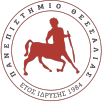Contemporary infusion methods for natural products. Innovative processes for pre-cleaning and condense natural product extracts. Methods for the final mild drying of condensed extracts and manufacture of bioactive products in a powder form. Various homogenization and micro-/nano-encapsulation technologies and their applications in the production of highly active natural products. Advanced techniques of instrumental analysis for the quality and quantity determination of active substances in natural products.
The complexity of viral genomes. DNA and RNA viruses. PCR, RT-PCR, Nested PCR, MULTIPLEX PCR, Real Time PCR ( taqman probes,molecular beacons,scorpions,FRET, SYBR GREEN technologies). DropletDigitalPCR, Immuno-PCR, LCR, NASBA, bDNA.
Clinical and environmental microorganism toxins and their mechanisms of action. Utilisation of microorganisms in toxicology. Toxicology Databases . Toxicity Molecular Profile establishment and analysis by microarrays. Viral molecular mechanismsof action. Pesticide resistance mechanisms. Molecular tracing of products of plant or animal origin.
Nepka Charitini, Tsitsimpikou Christina, Tsarouxas Konstantinos, Vasilopoulos Yannis, Grekas Nikolaos
Basic principles of general toxicological pathology, anatomy and histopathology in humans and lab animals. Basic principles of morphology, physiology, pathology and biochemistry of the main organs. The effect of gender in organ toxicology. Assays for sample histological assessment. Examples of compound toxic effects and their pathophysiology .
Clinical trial and study protocol planning. Stages, types and categories of clinical trials. Clinical trial subjects, retrospective and potential studies. Data collection, purification and control . Statistic tools. Clinical trial licencing and moral consequences.
Kouretas Dimitrios, Stagkos Dimitrios
Toxicity and cell death mechanisms. In vitro assays for antioxidant activity (DPPH, ABTS, DNA protection from environmental and dietary oxidative agents, oxidative stress analysis in eukaryotic cells by flow cytometry). Dietary factor chemoprophylactic analysis in vivo in human blood (measurement of Total Antioxidant Capacity, Glutathione, protein oxidation, lipid peroxidation, catalase).
Kouretas Dimitrios, Karpouzas Dimitrios, Vizirianakis Ioannis, Mamuris Zissis, Dedoussis Georgios, Serkos Haroutounian, Jamurtas Athanasios, Kovatsi Leda
Introduction in Environmental Toxicology, Assays for the assessment of compound ecotoxicity in the lab and open field levels. Evaluation of pesticide ecotoxicity in the EU.
Food toxic substances. Fungi. Compounds that are formed during cooking. Food allergens. Dietary regulation of CYP450. Food and drug interactions. Cancer modification via caloric restriction. Food chemoprophylaxis. Glutathione and its role. GMOs.
Asprodini Eftihia, Kovatsi Leda, Tsitsimpikou Christina
Physicochemical properties of substances associated with their biological activity and environmental persistence. Computing methods for the connection of physicochemical properties and biological activity of xenobiotics with their molecular structure. Xenobiotic molecular mechanisms of action. Mechanisms of action examples in animals with no correspondence to humans. Biochemical marker development, like –‘omics’, as general exposure markers. Use of nanotechnology and biotechnological applications in human tissues. Clinical and Forensic toxicology. Doping, pathophysiology and toxic effects of doping, doping compound metabolism. General principles and accreditation of assays. Toxicokinetic computing models based on physiology.
Kouretas Dimitrios, Sarigiannis Dimosthenis, Nikolopoulou Dimitra, Tsitsimpikou Christina, Foufa Eleni
Introduction in the European Law for Chemical Products and Biocide-Pesticide Products. Consumer protection – Product circulation restrictions. Safety in the working environment. Risk assessment strategies. The example of the electronic cigarette and its legislativeresponse. Chemical substance and mixture classification according to the Regulation 1272/2008/EU. Risk management and notification. Genetically Modified Organisms (GMOs).
Protopapadakis Evangelos, Arapostathis Efstathios
Bioethical issues in toxicology Genetic material commercialization, bioethical issues from rising technologies such as synthetic biology, GMOs, patent rights, discrimination between discovery and invention, genomic data banks, issues deriving from national and communal regulations for compound toxicity.
